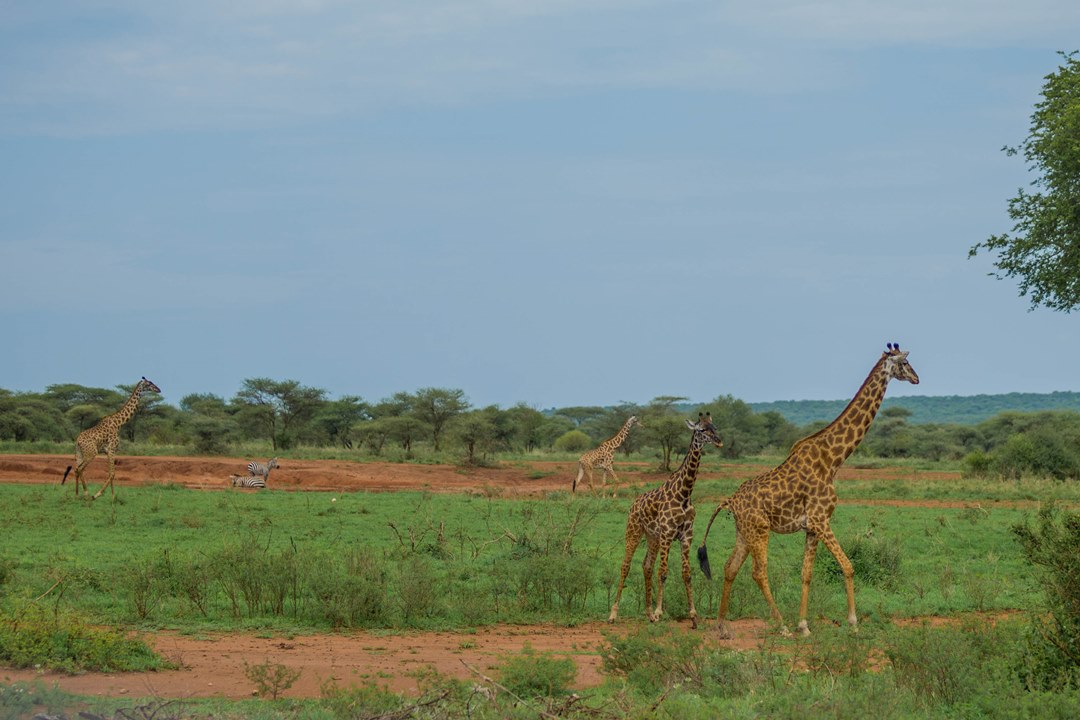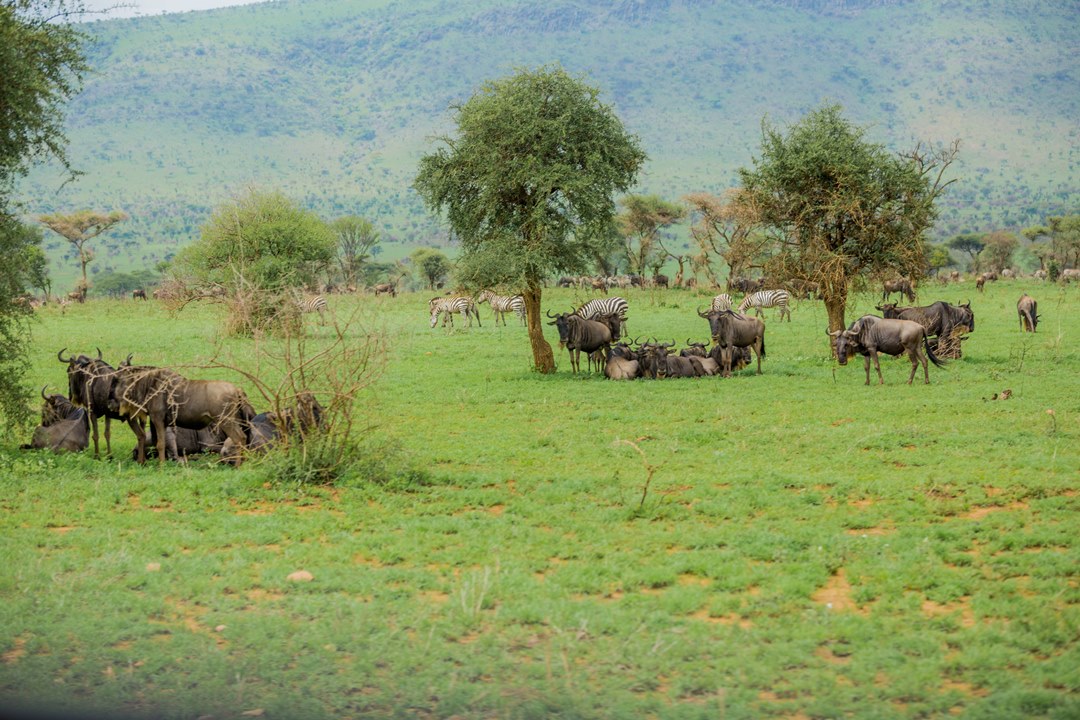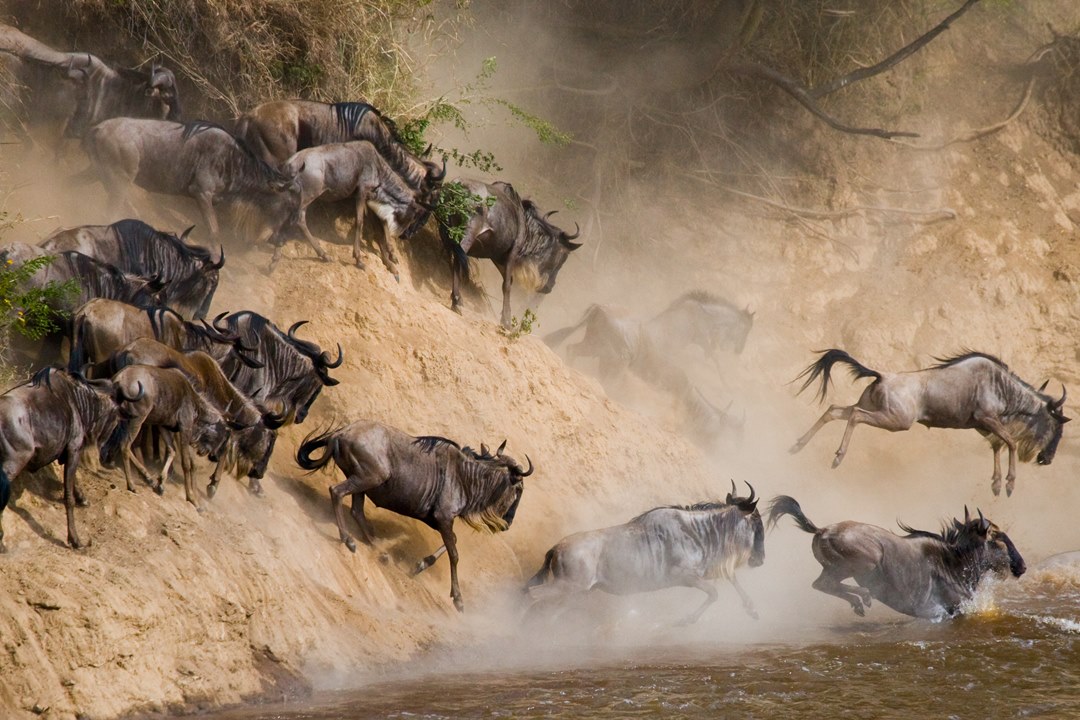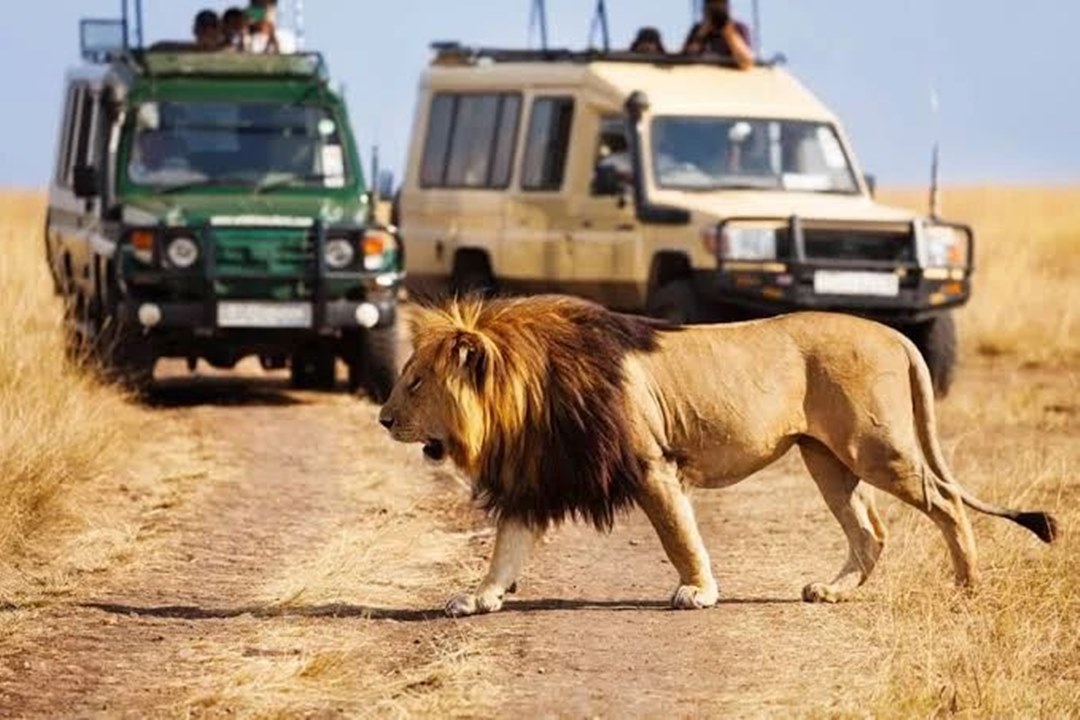AREA : 14763 Sq. Km.
ALTITUDE: 1400 Metres.
The Serengeti National Park is as big as Northern Ireland and is the most popular wildlife sanctuary in the world. It has been a protected area since the 1940s and was accorded national park status in 1951. In 1981, the Serengeti was inscribed on the list of UNESCO world heritage sites. The park is fantastic in its natural beauty and unequaled in its scientific value. This vast expanse of land is known to contain about 4 million different types of animals.
The plains of Serengeti are mainly crystalline rocks overlain by volcanic ash with numerous granitic rock outcrops (kopjes). In the north and along the western corridor are mountain ranges of mainly volcanic origin. Two rivers flowing west usually contain water and there are a number of lakes, marshes, and waterholes.
Large herds of antelope of all sorts including Patterson’s eland, Klipspringer, Dikdik, impala, Zebra, gazelles, water, bush and reedbuck, topi, kongoni, cotton’s oribi, grey bush duiker, roan antelope buffalo, and wildebeest. Plus: lion, leopard, cheetah, hyena, bat-eared fox, hunting dog, and jackal. Smaller mammals: spring hare, porcupine, warthog, hyraxes, baboon, vervet monkey, colobus monkey, patas monkey, and mongooses. Larger mammals: giraffe, elephant, hippopotamus. Nearly 500 species of bird, including vultures, storks, flamingoes, martial and fish eagles, and ostrich. Reptiles: crocodiles, a number of species of snakes and lizards.
The following statistics of a wildlife population are a small indication of the immensity of the Serengeti: 700,000 Thompson gazelles, 65,000 Topi, 50,000 Grant gazelles, 1,500,000 wildebeest, 200,000 zebras, 2,000 lions, 800 leopards, 4,000 hyenas, 200 wild dogs, 500 cheetahs, 500 species of birds, more than 30 species of large herbivores…the list goes on.
In May and early June, you can witness the annual migration of millions of zebra and wildebeest in search of water and forage as the season’s change.
Vegetation: Serengeti’s low vegetation means that game viewing is relatively easy. It varies from open grass plains in the south to savannah with scattered acacia trees in the centre, hilly wooded grassland in the north, to extensive woodland and black clay plains in the west. There are many small rivers, lakes, and swamps scattered about. Animals live in absolute freedom on the endless plains.



